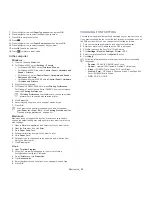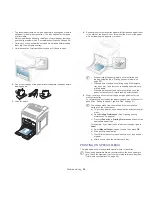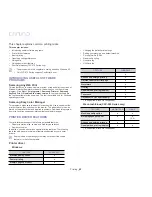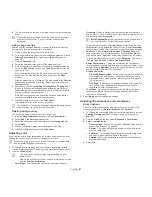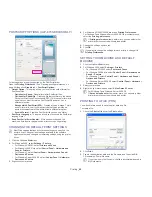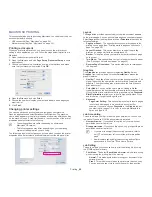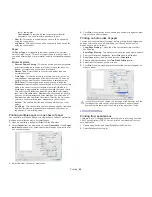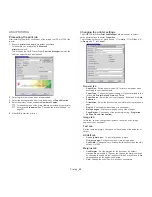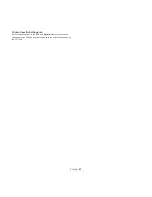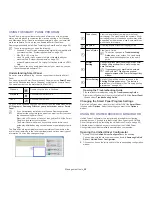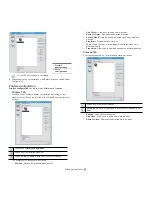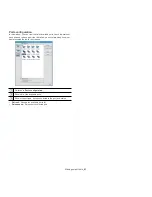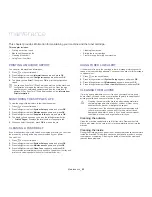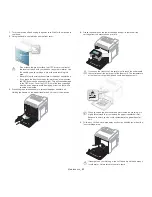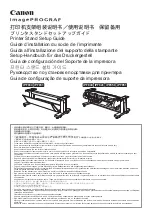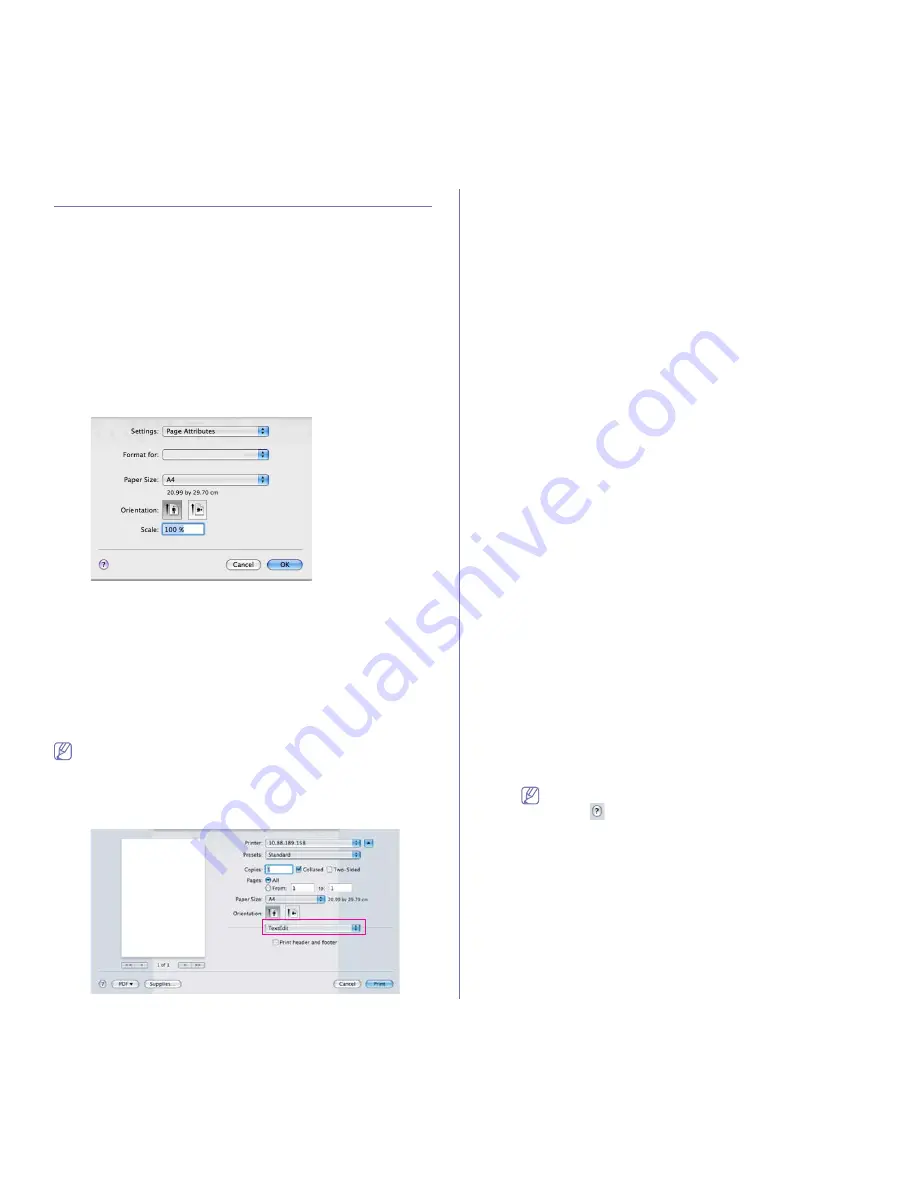
Printing
_ 49
MACINTOSH PRINTING
This section explains how to print using Macintosh. You need to set the print
environment before printing.
•
USB connected (See "Macintosh" on page 24).
•
Network connected (See "Macintosh" on page 30).
Printing a document
When you print with a Macintosh, you need to check the printer driver
setting in each application you use. Follow the steps below to print from a
Macintosh:
1.
Open the document you want to print.
2.
Open the
File
menu and click
Page Setup
(
Document Setup
in some
applications).
3.
Choose your paper size, orientation, scaling, other options, and make
sure that your machine is selected. Click
OK
.
4.
Open the
File
menu and click
.
5.
Choose the number of copies you want and indicate which pages you
want to print.
6.
Click
.
Changing printer settings
You can use advanced printing features provided by your machine.
Open an application and select
from the
File
menu. The machine
name, which appears in the printer properties window may differ depending
on the machine in use. Except for the name, the composition of the printer
properties pane is similar to the following.
•
The setting options may differ depending on printers and
Macintosh OS version.
•
The following panes may differ, depending on your operating
system or the application you are using.
The following pane is the first pane you will see when you open the printer
properties pane. Select other advanced features from the drop down list.
Layout
The
Layout
tab provides options to adjust how the document appears
on the printed page. You can print multiple pages on one sheet of paper.
Select
Layout
from the drop-down list under
Orientation
to access the
following features.
•
Pages per Sheet:
This option determines how many pages to be
printed on one page (See "Printing multiple pages on one sheet of
paper" on page 50).
•
Layout Direction:
This option allows you to select the printing
direction on a page similar to the examples on UI.
•
Border:
This option allows you to print a border around each page
on the sheet.
•
Two-Sided:
This option allows you to print on both sides of a paper
(See "Printing on both sides of paper" on page 50).
•
Reverse Page Orientation:
This option allows you to rotate paper
180 degrees.
Graphics
The
Graphics
tab provides options for selecting
Quality
. Select
Graphics
from the drop-down list under
Orientation
to access the
graphic features.
•
Quality:
This option allows you to select the printing resolution. The
higher the setting, the sharper the clarity of printed characters and
graphics. The higher setting also may increase the time it takes to
print a document.
•
Color Mode:
You can set the color options. Setting to
Color
typically produces the best possible print quality for color documents.
If you want to print a color document in grayscale, select
Grayscale
.
•
BlackOptimization:
allows you to print in high quality black. If you
use this option, it might take longer to print.
•
Advanced
-
Page Color Setting:
This option allows you to print some pages
in color and other pages in mono within a document
U
For
example, if you have chosen
Grayscale
in the
Graphic
tab, but
you want to print pages 1~4 in color, then select
Color
in this
option and type in 1-4.
Job Accounting
This option allows you to print with the given permission. You can use
this option if you have 512MB optional memory installed.
•
User permission:
If you check this option, only users with user
permission can start a print job.
•
Group permission:
If you check this option, only groups with group
permission can start a print job.
•
If you want to encrypt job accounting password, refer to
help
on the bottom left coner of the printer properties
pane.
•
Administrators can enable job accounting and configure
permissions in SyncThru™Web Admin Service.
Job Setting
This option allows you to choose how to print the printing file by using
the 512MB optional memory.
•
Print Mode:
The default
Print Mode
is
Normal
, which is for printing
without saving the printing file in the memory.
-
Normal:
This mode prints without storing your document in the
optional memory.
-
Proof:
This mode is useful when you print more than one copy.
You can print one copy first to check the quality, than print the

